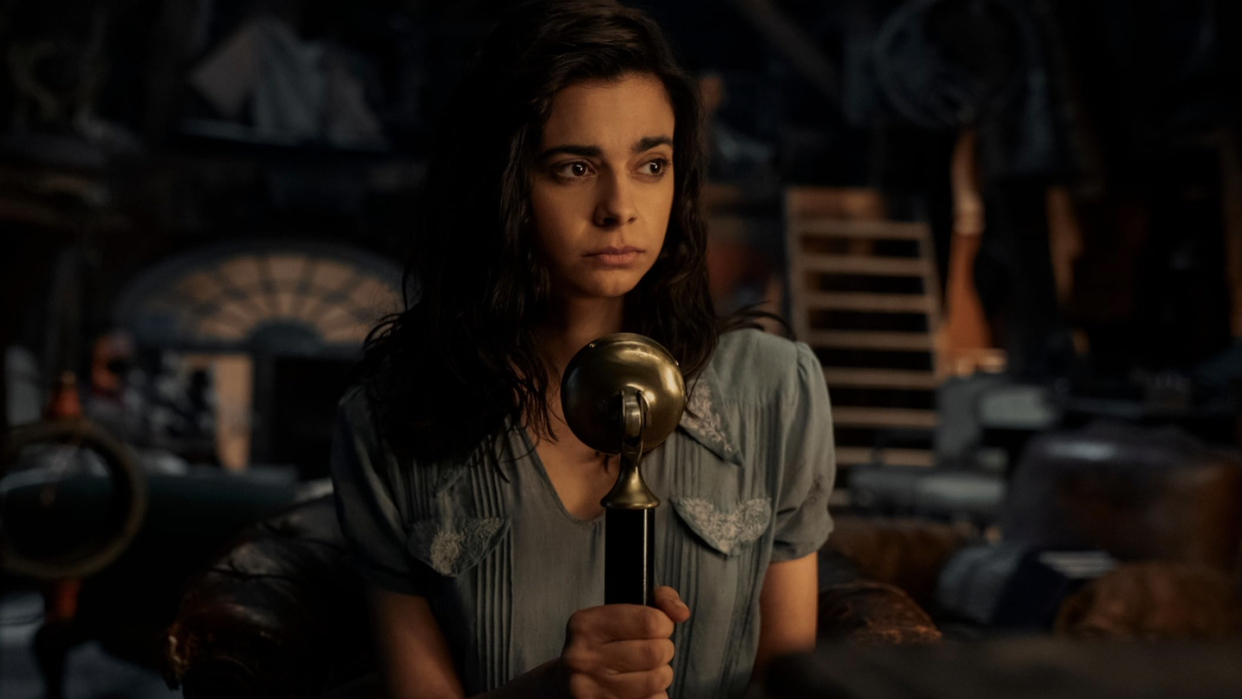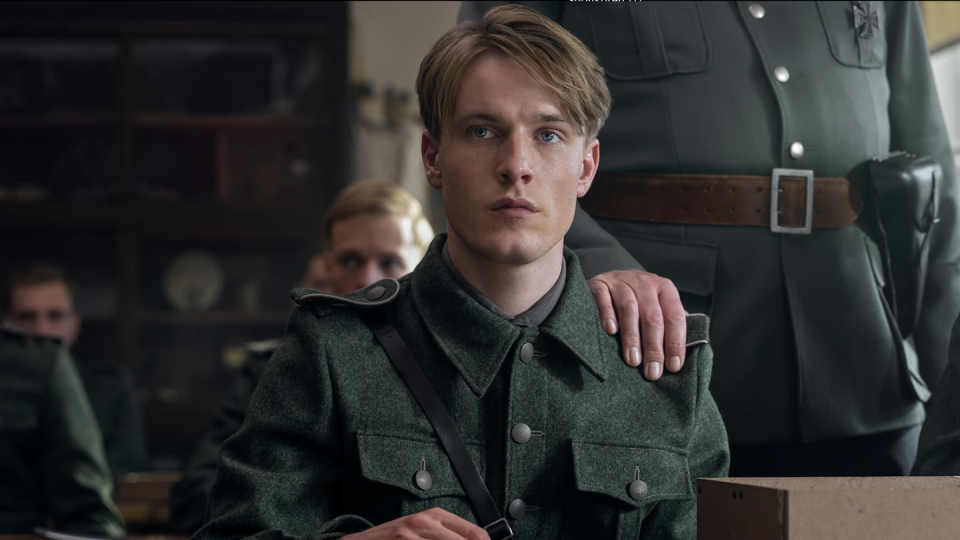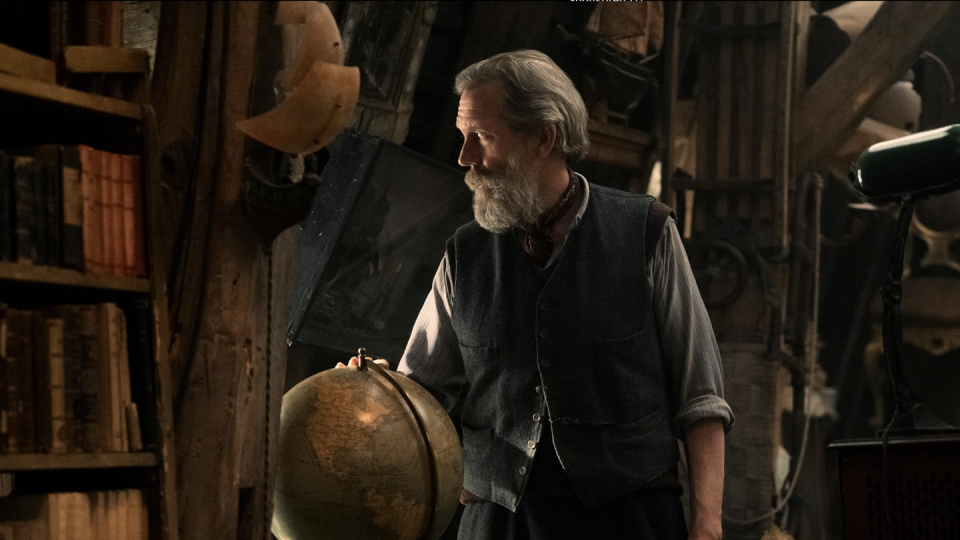How 'All the Light We Cannot See' Differs From the Book

Adapting a beloved novel for television is no easy task. Director Shawn Levy knew this when he sat down to transform Anthony Doerr’s Pulitzer Prize-winning book, All the Light We Cannot See, into a mini-series for Netflix. Thanks to careful collaboration and judicious changes, he's created a stunning show that explores the life of Marie-Laure LeBlanc (Aria Mia Loberti), a blind young woman struggling to survive in France under Nazi occupation. While running a forbidden radio broadcast, she changes the life of a young Nazi soldier named Werner Pfennig (Louis Hoffman).
In order to bring the story to life, Levy consulted Doerr for historical accuracy. Levy told Entertainment Weekly that Doerr “wasn’t precious” about his adaptation, but still wanted to “get the history right.” Levy continued, "The way we show real events, the invasion of Paris and the exodus of millions from their hometown in a single day—things like that were important for him that we get it right."
Aside from that, Levy had the creative freedom to bring Doerr’s story to life as he saw fit. Ahead of the premiere, Levy told Vanity Fair that he felt it was important for the lengthy novel (which clocks in at over 500 pages) to be turned into a mini-series rather than a movie. “The story is so sweeping, and it’s an interesting combination of intimate storytelling and epic backdrop," he said. "I had a feeling that two hours was never going to service such a beautiful, dense novel.”
The result is a four-part series that spans numerous decades and storylines as it weaves together Marie-Laure and Werner's stories. Still, Levy had to make some critical changes to pull the project together. Below, we’ve rounded up the key differences between the novel and the television series.
New Characters
Levy's All the Light We Cannot See introduces a handful of new characters, including Nazi soldiers Captain Mueller (Jakob Diehl) and Schmidt (Felix Kammerer). When Mueller and Schmidt discover Werner's obsession with Marie-Laure's broadcast, they threaten her life. Their presence, according to Levy, is meant to emphasize the growing tension and hatred brewing during World War II. In an interview with Entertainment Weekly, Levy said, “We created a few characters, specifically a few German characters, in order to manifest the evil of the Nazi party, the threat of war, and the encroaching threat on Marie-Laure being found in her hiding place. So we created a few new characters, and Anthony, the novelist, found it really effective, I’m happy to say.”
Alternate Backstories
In order to get to the heart of the plot, some of the characters' backstories are condensed. Marie-Laure and her father, Daniel LeBlanc (Mark Ruffalo), spend a significant chunk of the novel fleeing to safety in Saint-Malo, where they are eventually taken in by Etienne (Hugh Laurie). That saga, along with Marie-Laure's upbringing in Paris, is woven into the second and third episodes of the series. Werner’s orphaned upbringing and initiation into the Nazi regime are also consolidated, as is his time training at a Nazi institute.

Madame Manec and Etienne
Levy makes significant changes to the relationship between two core characters, Madame Manec and Etienne—and to their ultimate fates. In the novel, Madam Manec is Etienne’s maid, but the television series draws them closer together as siblings. On screen, Madame Manec eventually dies of pneumonia (instead of a heart attack, as in the book), which inspires Etienne to continue her advocacy work in the French resistance. As for Etienne, the novel sees him survive the war and reunite with Marie-Laure to live out the rest of his days, while in the series, he's killed off for dramatic effect. Right before his death, he asks Werner to take care of Marie-Laure.

The Ending
The ending of All The Light We Cannot See might be the most significant change. In the final episode, Reinhold von Rumpel, a German military commander, finds Marie-Laure’s hiding spot and attempts to kill her. Werner tries to fight him off, but Marie-Laure is the one who kills him, with a shot to the head.
In the novel, Werner kills Reinhold before he’s able to reach Marie-Laure. Later on, he's captured by American soldiers and falls ill while being held as a prisoner of war. One night, while in a delirious state, he walks outside, steps on a landmine hidden by the Germans, and "disappears in a fountain of earth." Thirty years later, Werner’s sister receives his belongings and finds a toy house from Saint-Malo. She uses it to find Marie-Laure and returns it to her, thinking it holds the Sea of Flames (a precious and supposedly cursed gemstone). Instead, she discovers the toy house has a key to the cage where Marie-Laure actually hid the diamond. By the time the book ends, Marie-Laure is an elderly woman recounting her life to her grandson.
The television series changes things, with Marie-Laure and Werner splitting up after Saint-Malo is freed from occupation. After sharing a brief dance to “Clair de Lune,” they hear American soldiers arrive to liberate Saint-Malo. Marie-Laure offers to smuggle Werner to safety through a secret passageway, but he declines and surrenders. Though he is safe and promises to find Marie-Laure after the war is ever, the show doesn’t suggest that they will ever reunite.
Afterward, the series ends with Marie-Laure throwing the Sea of Flames into the ocean, but the story didn't have to end there. Instead, it continued with a series of epilogues that were later edited out (including Werner’s death). Levy explained his decision to cut those scenes, to Entertainment Weekly. Check out his statement below.
“Though it is far from a happy ending, I wanted to end with a promise of hope, and there were some bleak, deeply unsetting scenes late in the book that we didn’t include in the show. But again, Anthony has turned out to be so happy with the show that he has agreed with that decision. So, things that might’ve made sense to the novelist a decade ago when he was working on this, might not make sense on screen, on Netflix, for a global, mainstream audience in 2023.
Watch All the Light We Cannot See
You Might Also Like


